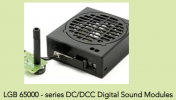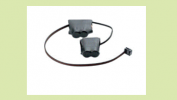I don't know why the snide comments to a fairly simple question.
As Greg says, I am helping Jack, who happens to be 84 yrs old and his memory is starting to go. He can't even remember who converted this loco to battery-r/c. He is not a big internet user, but he has a large garden railroad that I maintain as it is the only place I can run my trains, and he loves to see the trains run.
Not having run his trains for 2 years due to Flu, we're trying to persuade them to work. This one ran for an hour then quit - sound first and then it slowed and stopped. The Airwire G3 board burns my fingers and refuses to link to the TX, so we assume it is fried. It has a Phoenix P8 card, which may have the GG-1 sound file in it, but we have no way to know as the programmer cables are unavailable due to Phoenix refusing to talk to clients. I can't persuade it to make a peep, yet, though I found the wires to the speed function are loose. I think we next disconnect the P8 card and feed it properly per the manual, to see if it works.
Thank you to the polite folk who confirmed my suspicion of how an electric loco sounds. I did travel behind a GG-1 back in 1976, but my memory isn't good enough to recall much! And thanks for the suggestions of alternative sound options, though I don't think he wants to spend $219 on a new P8 card and $169 on an Airwire G4 to replace the ones in the loco.
Personally, I'm trying to avoid having to go through the learning curve of DCC programming with a new Airwire board, as it isn't even my loco. I much prefer Mylocosound!


